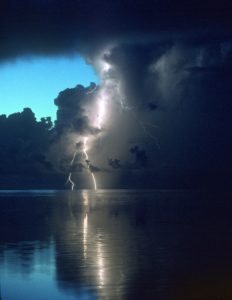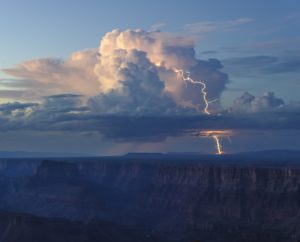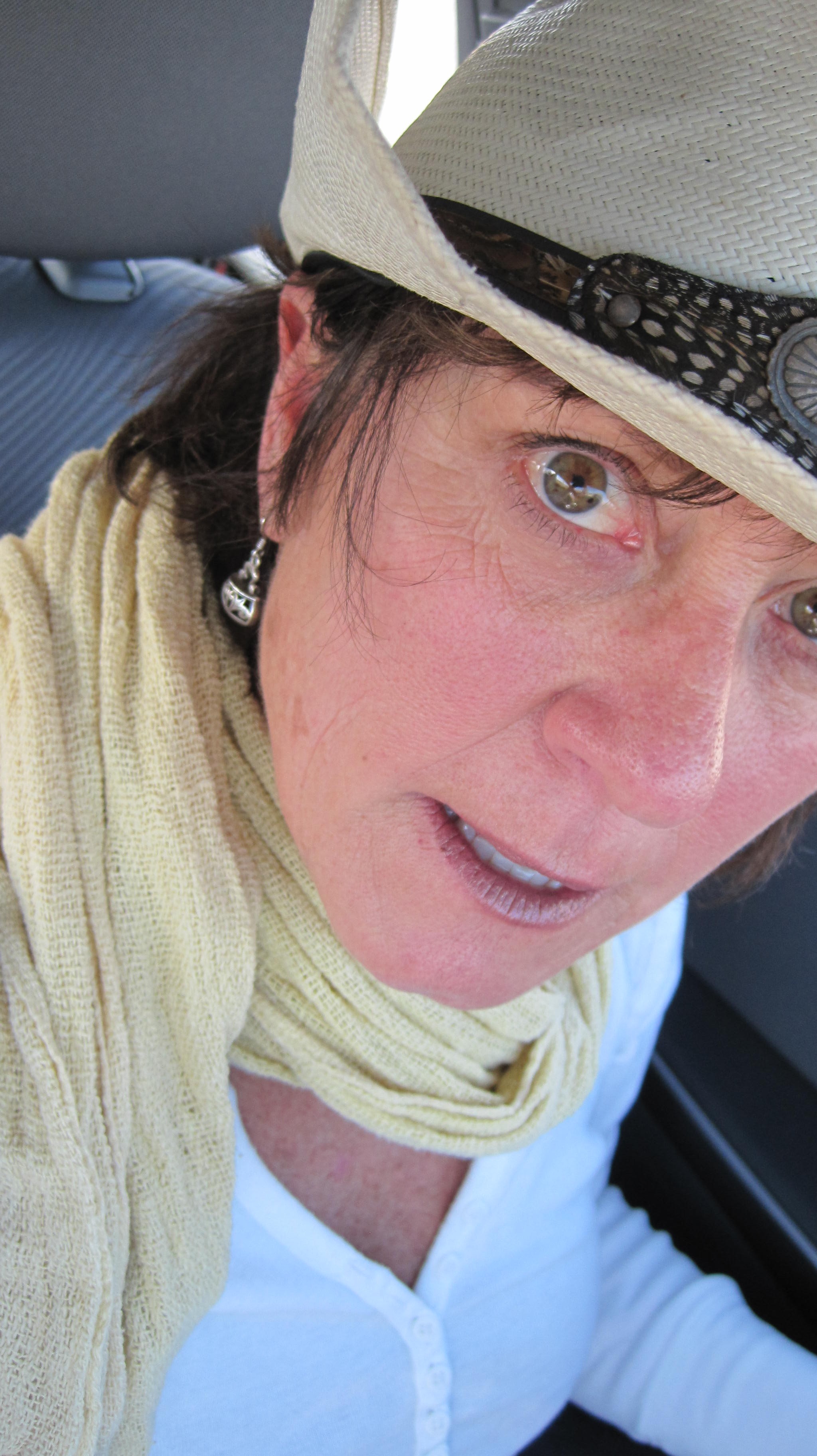I returned to South Florida last week for a family gathering. Humidity textured the air, temperatures edged into the low 90s, and thunderstorms rumbled each afternoon, shaking mangoes off trees and creating steamy, spectral patches that rose from the baked asphalt.
Under an overcast sky and a warm, weak rain, I rode my bicycle home from a friend’s house one night. The streets were glossy and noiseless. I pedaled through warm puddles. Lightning rippled and flashed violet waves of light behind low clouds, creating an illuminated dome above my head. I pedaled on, unfazed. I heard no thunder and saw no angular zigzags. Light flitted behind and between the clouds in violet, pink and pale blue. I had pedaled a bike through a familiar Florida neighborhood with this kind of lightning show hundreds of times, thousands of times.
I grew up calling this heat lightning; I still do. It wasn’t until recently that I learned meteorologists say that term is a misnomer. Heat lightning is cloud-to-cloud lightning that produces faint shimmying flashes from distant thunderstorms. The silence that accompanies the light show is because the sound of thunder dissipates before it reaches the ear. (Typically thunder claps only pack enough juice to be heard for a 15-mile radius.)
I grew up in Florida, a state that meteorologists and weather science organizations call the lightning capital of the country. In these first seven months of 2017, the National Weather Service stats say that six people have died in the United States from lightning strikes; four were in Florida.
In my high school years our family moved to a place with even more lightning—a city in a wide swath that belts across the state’s midsection and is known as Lightning Alley. I lived in Lightning Alley for about five years and witnessed wowing lightning of all kinds—the fierce, jagged bolts that bring startling thunder as their dance partners; the zaps of light veining a solemnly rainy sky; the fiery, finger-of-God streaks; and the soft light undulations behind low-hanging clouds in the summer months. Lightning was a show, not a threat.
I heard stories about people getting hit by lightning, but what were the chances? I had also heard stories of people getting killed by falling coconuts and ornery alligators. None of it seemed probable to me, and so I grew up defanging lightning’s danger and pedaling past all the science that didn’t support my ideas.
When I arrived in Flagstaff 13 years ago, I met new weather, new patterns of heat and water, new skies. I learned about the wrathful columns of cumulonimbus clouds that populate the summertime West and hurtle their Donner and Blitzen. I learned about the monsoon season, my favorite time of year. The summer monsoon brings us rain, and that sacred moisture is the linchpin for thunderstorms that bring the fury and spectacle of lightning. Monsoon conditions can encourage violent storms with cold and angry rain. Operatic lightning slices and splinters through the skies, announcing its strength and voltage. This is lightning that lets you know who the boss is. It’s not a show; it is a threat.
It was raining last week when I left the groovy Miami pizzeria where we had celebrated a birthday. My niece, Carmen, was with me; she spent about a year living in Flagstaff and doing trail work in national parks with ACE, the American Conservation Experience. We ran for the car and when we settled in, lightning flashed.
“Do you know what I learned working outside in Arizona? Working outside during the monsoons? I really learned about lightning, and I think about it now in ways that I never have before,” she said.
She had my attention. Carmen said that even though she had lived with plenty of lightning growing up in Florida, she never took it very seriously. Living in Flagstaff, she said, taught her to respect it.
“I didn’t learn to fear it, but I learned to be aware of its danger.”
She said she now sees lightning as a larger force, as something possibly more powerful than beautiful.
I’ve been thinking about what she said ever since.



